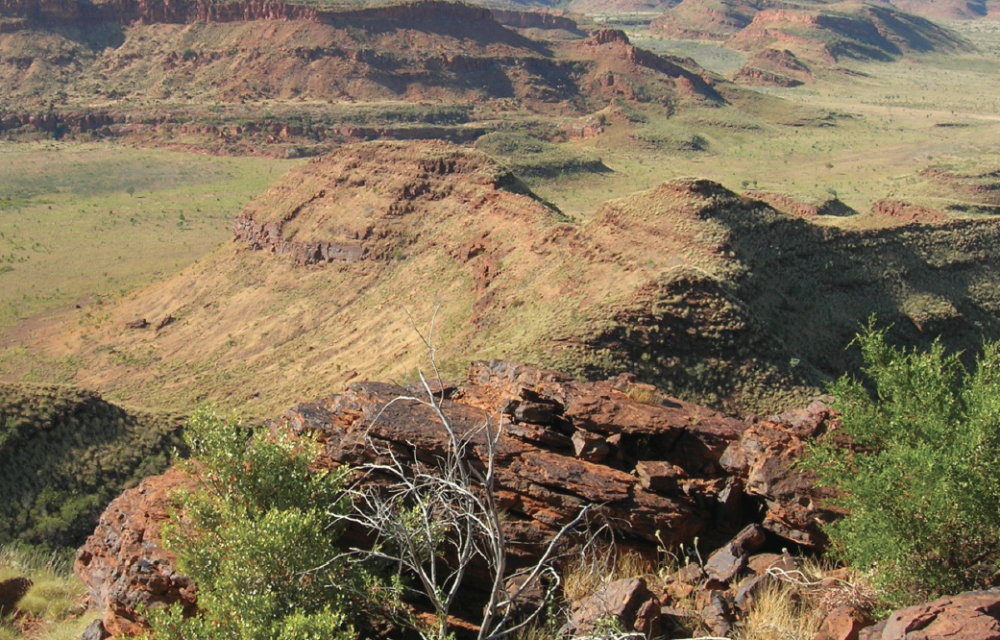WA’s oldest rocks could fuel the future—natural hydrogen and helium might just be the clean energy surprise lurking below your drill bit


, , , , , , , , , , , , , , , , , ,
, , , , , ,
, ,
A new report from the Geological Survey of Western Australia shines a spotlight on some of Australia’s most underexplored frontiers—Neoproterozoic basins with the potential to reshape the future of clean energy and critical gases.
Compiled by AJ Mory and PW Haines, the Summaries of major Neoproterozoic and Phanerozoic basins prospective for energy-related commodities, Western Australia document systematically summarises the energy-related potential of WA's Neoproterozoic and Phanerozoic basins. Amidst its technical depth, one finding stands out: strong indications that Western Australia may be sitting on untapped reserves of natural hydrogen (H₂) and helium (He).
The Hydrogen and Helium Frontier
While conventional hydrocarbons remain the best-understood resources in these basins, the report reveals that natural hydrogen and helium showings have been recorded in several onshore formations—particularly in the Amadeus Basin and potentially in its geological cousin, the Murraba Basin.
In the Amadeus Basin, which spans central Australia but extends into WA near the border with the Northern Territory, the presence of helium is especially striking. The Magee 1 well recorded helium concentrations of 6.2%, while Jacko Bore 1 (previously known as Mt Kitty 1) yielded gas comprising 9% helium and an astonishing 11% hydrogen. These levels are well above industry thresholds for economic interest and hint at a world-class subsalt gas system sealed by ancient salt formations in the Gillen Formation.
What’s particularly significant about these gases is their origin. Unlike hydrocarbons formed from decayed organic matter, helium and natural hydrogen are generated geologically. Helium is often produced through the radioactive decay of uranium and thorium in basement rocks, then trapped by impermeable seals such as salt. Hydrogen, on the other hand, may be generated via the serpentinisation of ultramafic rocks or by water-rock reactions at depth.
In an era of decarbonisation, both gases are gaining strategic importance. Helium is indispensable to MRI machines, semiconductor fabrication, and aerospace engineering. Natural hydrogen, meanwhile, is emerging as a potential game-changer in the global shift toward low-emission fuels. Unlike hydrogen produced via electrolysis ("green") or from methane ("blue"), natural hydrogen or "white hydrogen" is extracted directly from geological sources, offering the prospect of cost-effective and carbon-free fuel.
The Murraba Basin: A Sleeping Giant?
Even less explored than the Amadeus, the Murraba Basin in central-north WA is described as speculative in its hydrocarbon potential. Yet its structural and stratigraphic similarities to the Amadeus suggest it may harbour analogous petroleum systems—including those capable of trapping helium and hydrogen.
Although no exploration wells have been drilled in the WA portion of the Murraba Basin, reconnaissance work by the Geological Survey and Central Petroleum has identified basin thicknesses exceeding 2000 metres in some depocentres. Moreover, recent gravity and magnetics data suggest the presence of salt-related tectonics—an encouraging sign for subsalt helium systems.
If natural hydrogen and helium are indeed present in the Murraba, it could open a new frontier of energy exploration. The parallels to the Amadeus Basin, where commercial gas has already been produced from Neoproterozoic formations, bolster the case for further investigation.
Why Hasn’t This Been Explored Already?
Part of the answer lies in historical priorities and technological limitations. Until recently, exploration in WA has prioritised oil and gas, with only modest attention given to non-traditional commodities. The infrastructure and investment needed to explore remote onshore basins is substantial, and neither hydrogen nor helium had the commercial spotlight they now enjoy.
Additionally, historical gas analyses often ignored helium and hydrogen content. In many cases, these gases were flared or simply not measured. It is only in the last few years—spurred by tightening global helium supplies and the race for clean hydrogen—that explorers have started to reassess old wells with new analytical techniques.
What’s Next?
The report stops short of recommending immediate drilling, but it lays the groundwork for a new phase of exploration. With carbon-neutral energy systems becoming a global imperative and the geopolitical risks associated with helium supply chains growing, the incentive to investigate these frontier basins has never been higher.
The Geological Survey identifies clear leads: high-helium shows in Magee 1 and Jacko Bore 1, halotectonic structures that could indicate effective seals, and sedimentary sequences in the Murraba Basin with the right ingredients for petroleum systems. What’s needed now is detailed seismic data, stratigraphic drilling, and geochemical profiling to assess reservoir quality, trap integrity, and gas migration pathways.
Implications for Industry and Government
For energy companies and critical minerals investors, this report is a call to look beyond the well-trodden paths of offshore gas and goldfields. It hints at a new type of frontier play—one based not just on hydrocarbons but on transition-enabling gases. For Western Australia, already a global resources powerhouse, this presents an opportunity to future-proof its energy sector and diversify its mineral wealth.
For governments, the findings reinforce the importance of supporting precompetitive data acquisition in underexplored regions. With limited seismic coverage and a sparse well log database, targeted investment in geoscientific studies could unlock major value.
Final Thoughts
The story told in GSWA Record 2025/3 is not one of polished certainty but of bold potential. Hidden beneath layers of salt, sandstone and time, the Neoproterozoic basins of Western Australia may yet yield resources that power the post-carbon world.
As hydrogen and helium rise in strategic importance, Western Australia’s ancient rocks may offer a surprisingly modern solution—clean, critical, and close to home.
Image: Geological Survey of Western Australia, Department of Energy, Mines, Industry Regulation and Safety (DEMIRS)
